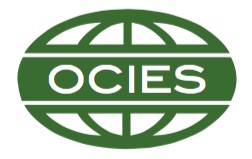Teacher transculturalism and cultural difference: Addressing racism in Australian schools
Keywords:
racism, Australia, transculturalism, schools, teachersAbstract
The increasing cultural diversity of students in Australia's schools is one of the salient changes in education over the last 30 years. In 2011, nearly half of all Australians had one or more parents born overseas, with migration from China, the Indian subcontinent and Africa increasing during the early 2000s (Australian Bureau of Statistics, 2012). However, despite these long established patterns of exposure to a multicultural environment, the incidence of racism experienced by children in Australian schools remains highly problematic. Recent research has shown that around 70% of school students witness or experience some form of racism (Mansouri, Jenkins, Morgan & Taouk, 2009). This paper argues that, although the reasons for this persistent marginalisation of cultural difference are multivariate, the background attitudes of teacher educators cannot be ignored. It posits that, in line with recent research (Casinader, 2014), the development and awareness of transcultural modes of thinking in educators, which are inclusive and reflective of different cultural approaches, are essential for modelling an educational environment for students in which cultural difference is accepted and prized, and not held up as a point of separation. It is also argued that such a transition will be facilitated only when the existing monocultural reality of the Australian teaching profession) is acknowledged and addressed.
Downloads
Published
Issue
Section
License
The International Education Journal: Comparative Perspectives is the official journal of the Oceania Comparative and International Education Society. The IEJ, (ISSN 1443-1475), publishes a general volume bi-annually in July and December and also publishes Special Editions occasionally. It is a free, open-access scholarly journal, managed by volunteers. There are no article processing charges, or any charges to authors.
In relation to intellectual property, as of 2020, the IEJ: CP claims only first publication rights; copyright of all work published in the journal remains with the authors under Creative Commons copyright license CC-BY-ND (4.0). Author(s) retain all rights to their works, ensuring that reference to the International Education Journal: Comparative Perspectives is clearly stated on any copies made or distribution. Submissions must not involve third parties with a claim to copyright, and be the sole work of the author(s). It is the responsibility of the author(s) to secure permission to reproduce photographs, illustrations, figures or tables. Single images, tables or figures can be re-used . If more than a single image or table are to be re-used authors must attribute first publication to IEJ: CP notify the IEJ: CP Editor. Authors may also make derivative works which are subject to these limitations.
See https://creativecommons.org/licenses/by-nd/4.0/ for more detail.
Re-distributed or used material must be referenced to the International Education Journal: Comparative Perspectives.
